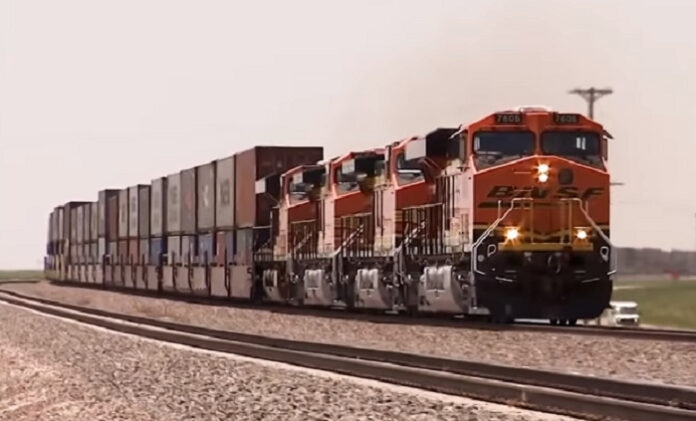
-
Freight rail firms stop accepting hazardous shipments as operators and unions seek to break a deadlock and avert a crippling US-wide strike this Friday
-
A freight rail strike would cost the US over US$2 billion daily aside fromsupply chain disruptions
-
Traders and railway operators want Congress intervention, but rail unions buck such a movethey said would only prolongs their woes
Freight railways have stopped accepting hazardous and security-sensitive goods shipments as operators and union leaders seek to avert a major US rail strike on September 16 that could halt transport of commodities, components and finished products.
Passenger railway Amtrak made adjustments to its routes, cancelling some long-haul schedules so as not to get caught in a strike on the freight rail tracks on which most of its passenger trains run.
Media reports say railroads and labor unions worked through the weekend to avoid a likely strike starting this Friday that could cost the US economy more than US$2 billion a day.
Logistically, a strike would see 39,000 containers idled, 75% of car deliveries delayed, 467,000 truck trailers idled, in addition to the financial daily loss, according to an estimate by FBN carried by Newswire and other business news portals.
Businesses are anxious as the unions representing more than 60,000 workers plan to walk off the job at the end of the week if they can’t secure certain quality-of-life provisions in their contracts.
The unions are battling over the rules around scheduling, which forces engineers and conductors to be “on call” seven days a week. On a US freight train, there are only two crews – the engineer and conductor.
A CNN report says the crew are fed up with being deprived of personal time, which contributes to a high quit rate, leaving crews woefully understaffed. Employment at major US railroads is down more than 30,000 or about 20% of the workforce, since the last contract was reached in 2017.
President Joe Biden prevented a strike in July by imposing a 60-day cooling-off period and appointed a panel to look into the disputes and offer recommendations. Only a few of the 12 unions have agreed to the panel’s recommendations, which include a 24% pay increase over the next five years and cash bonuses.
“Our members are being terminated for getting sick or for attending routine medical visits as we crawl our way out of worldwide pandemic,” union leaders wrote over the weekend. They said the attendance policies “are destroying the lives of our members, who are the backbone of the railroad industry.”
The 60-day cooling off ends at 12:01 am ET Friday, allowing the unions to go on strike or the railroads to lock out union members. By then, Biden can no longer intervene.
The next move is to take the dispute to Congress for a legislation that balances the demands of the workers and the interests of railroads operators. Traders who are inclined to side with the railroad operators support the call to take the issue to Capitol Hill.
But the unions of the train crew threatening to go on strike said the railroads’ new freight restrictions are designed to put pressure on Congress to block the unions from walking out. They said the move was “completely unnecessary” and “no more than corporate extortion.”
“The railroads are using shippers, consumers, and the supply chain of our nation as pawns in an effort to get our unions to cave into their contract demands,” said the unions’ statement. “Our unions will not cave into these scare tactics, and Congress must not cave into what can only be described as corporate terrorism.”
On Sunday, Norfolk Southern said in an online notice that it “has begun enacting its contingency plans for a controlled shutdown of our network at 00:01 on Friday, Sept. 16.” Union Pacific and CSX also announced contingency planning for a possible strike. BNSF urged its customers to call members of Congress to avert interruptions.
Union Pacific said it stopped accepting hazardous cargo to “protect employees, customers, and the communities we serve.”
Passenger railway Amtrak announced Monday that it is preemptively suspending service on some of its long-range routes, mostly out of Chicago, due to the looming freight rail strike. Amtrak trains on the long-haul routes mostly run on tracks built for the freight trains.
Among the routes being suspended are long-haul Chicago-Los Angeles, Chicago-Seattle, Chicago-San Francisco and a portion of a route that runs from Los Angeles to San Antonio.




